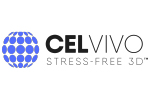PET/SPECT/CT preclinical imaging CUBES

Automated microscopy and Spatial Proteomics
Real-time, label free cell analysis
Nano and micro particle analysis

Accelerate to discover
Related topics
April 2024 publication revealing benefits of using intravital microscopy in trascriptomics studies

May 8, 2024
Transcriptional activation of Bmal1 drives the inflammatory activity of monocytes by modulating mitochondrial unfolded...
Minimal information for studies of extracellular vesicles (MISEV2023)

May 7, 2024
MISEV2023 is intended to aid any and all EV researchers: from those just starting their EV journey to more established...
Omics Studies of Tumor Cells under Microgravity Conditions

May 6, 2024
It is important for the analysis of data from space experiments to distinguish unspecific stress reactions from...
Column-Free CD14+ Monocyte Isolation using 50nm Superparamagentic Beads on MARS® Bar
Apr 25, 2024
The MARS® Bar Magnetic Separation Platform is a closed and automated isolation for cell therapy development and...
Spatial and temporal profiling of the complement system uncovered novel functions of the alternative

Apr 24, 2024
Mounting evidence implicated the classical complement pathway (CP) in normal brain development, and the pathogenesis of...
Have you missed any recent Cytek webinars? Watch webinars and product tutorial videos at any time

Apr 23, 2024
Have you missed any recent Cytek webinars? Watch webinars and product tutorial videos at any time at Cytek website....
The chicken chorioallantoic membrane as a low-cost, high-throughput model for cancer imaging

Apr 4, 2024
Here, we assessed the chicken chorioallantoic membrane (CAM) as an alternative to mice for preclinical cancer imaging...
A microthrombus-driven fixed-point cleaved nanosystem for preventing post-thrombolysis recurrence

Apr 3, 2024
A thrombin-responsive and fixed-point cleaved Fu@pep-CLipo was developed for highly efficient and precise thrombolysis...

Jan 31, 2023
In preclinical imaging, it is important to aim for dose reduction as longitudinal studies with many scanning time points can result in accumulated doses that impact your study results. However, lowering the dose in PET and CT imaging inherently introduces noise, and reduced image quality negatively impacts diagnostic performance. Various denoising techniques already exist, but deep learning (DL) methods have become increasingly popular for image quality enhancement.
Florence explains how she developed and evaluated an image-to-image CNN framework to predict higher quality images from noisier images acquired at lower radiation doses for both modalities.
Related technologies: PET, SPECT, CT
Get more info
Brand profile